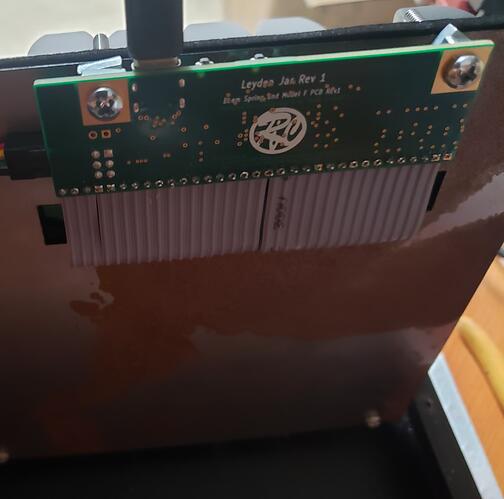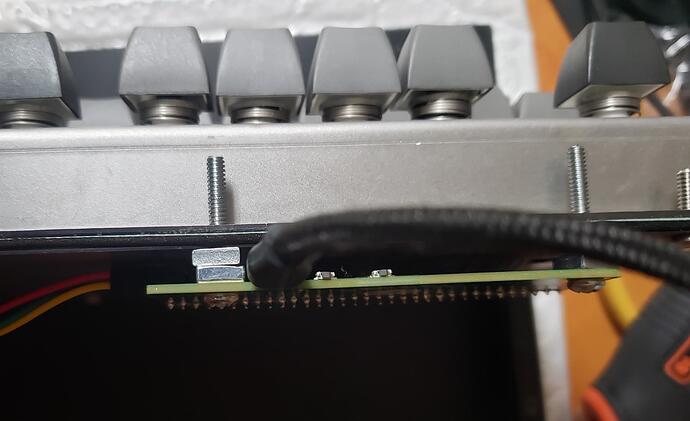Hello all!
Long time no see in this thread, did you thought it was a dead project ?
Far from it ![]()
It fact I continued slowly working on it, mostly on the firmware development side.
As I had little visibility on how this controller would work on other boards than mine, I needed someone with other variations of capacitive keyboards to help me.
And after discussing with @Ellipse he kindly accepted to give me some help on that task.
After receiving the Leyden Jar PCB he decided to solder it to one of it’s Brand New Beamspring Round 2 Full Size keyboards, our goal was then to try to make the Leyden Jar controller PCB work with this hardware.
Here are some shots of the Leyden Jar PCB assembly on the Beamspring Full Size, courtesy of @Ellipse.
As I didn’t have the board on hand, making the controller work on it was a complicated matter.
First I had to figure out how the switch matrix was organized and did a complete visual reverse engineeing of the beamspring PCB plate based on images provided by @Ellipse.
And also had to find the correct values for the calibration process.
After quite a few back and forth exchanges and firmware revisions we finally managed to do it ![]()
There is now at @Ellipse workspace a Brand New Beamspring Full Size Round 2 keyboard with a Leyden Jar controller working nicely with solenoid and leds support, than you very much for your great support Joe!
Now is this controller perfect ?
Of course not, even if the most important feature, the capacitive sensing technology, is working very reliably.
So it is now time to make a revision 2 of this PCB and try to make it perfect.
The plan is also to add two additional columns, if possible, for future keyboards with a lot of keys like 122 keys battleships.
See ya people!

